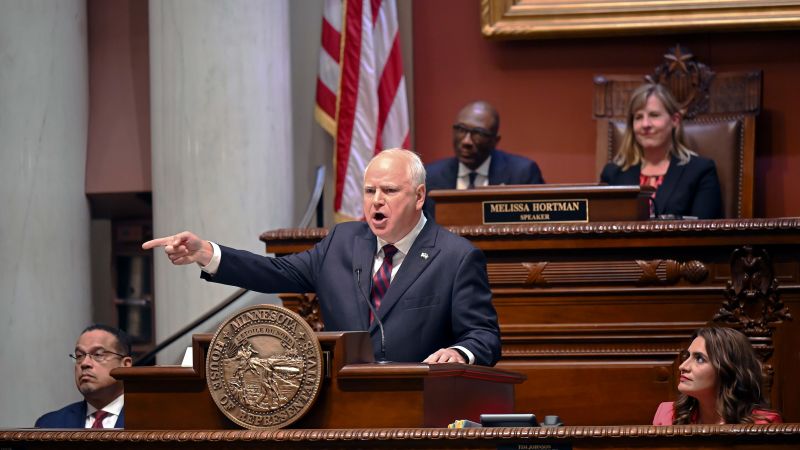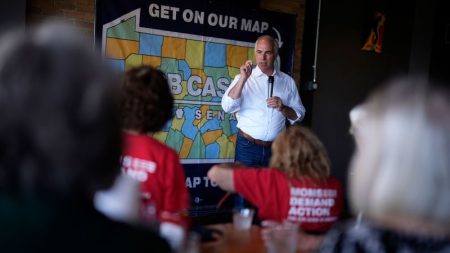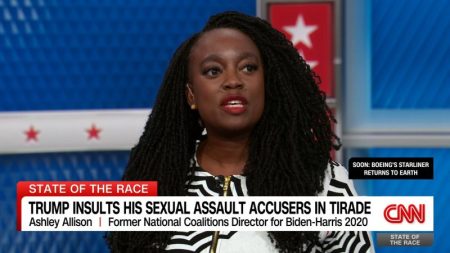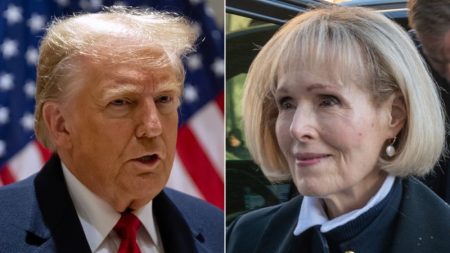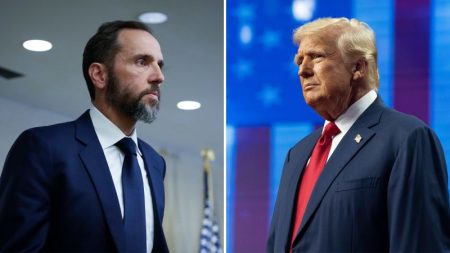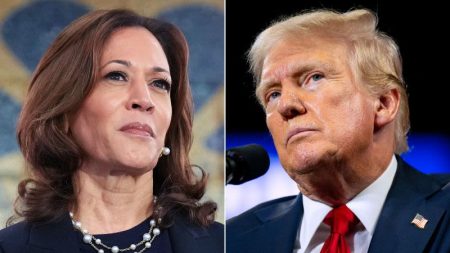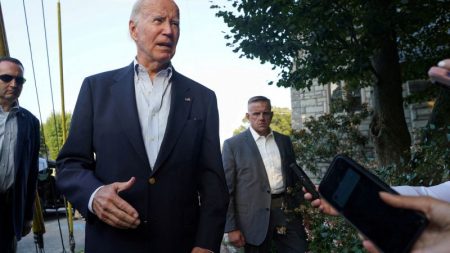In 2023, Tim Walz declared time for bargaining, light cajoling and compromise was over.
After four years of divided government, Minnesota voters had handed Democrats control of the state House, Senate and, for Walz, reelection to the governor’s mansion. After the “enormous headwinds and complicated politics” of his first term in office, he argued his party had been given “a new mandate for action.”
“The day I took the oath of office for the second time, I declared that the era of gridlock was over,” Walz said during his State of the State address last year. “This is a moment we have been building towards for a long time. And we won’t let it go to waste.”
What came next – the passage and signing of a slew of progressive laws – is now under a microscope with the Minnesota governor vaulting onto the national stage as Vice President Kamala Harris’ newly named running mate. And Walz’s journey – from teacher, National Guard veteran and football coach to congressman, governor and now potential vice president – is as much about his own personal political evolution as the state and country that changed around him.
The Trump campaign is eager to define him as a far-left liberal on the wrong side of the culture wars, particularly when it comes to his support for transgender youth.
His backers, however, call him a “prairie populist,” focused on meeting everyday needs of working Americans, as demonstrated by policies like free school meals for kids and paid family and medical leave. They say that if he’s changed, it’s because his constituents have, too.
Democrats say they think Republicans will struggle to paint Walz as an ultra-liberal, and that many of the criticisms the Trump campaign is launching at Walz – from his handling of the protests in the wake of George Floyd’s murder by a police officer to raising questions about his military service – already fell flat during the governor’s 2022 reelection bid. Walz won by nearly 8 percentage points.
“Republicans are going to face a little bit of the same problem with Walz that they are facing with Vice President Harris right now, which is that they’re totally unsure of their footing,” said Democratic strategist Tim Hogan. “They don’t really have a contrast message that resonates.”
Walz’s political career began when he flipped Minnesota’s 1st Congressional District – a red, rural seat that had only been held by one other Democrat in 100 years – in 2006, a wave midterm year for his party. Democrats regained the majority campaigning on what they described as a “culture of corruption” within the Republican Party amidst several scandals, and Walz defeated incumbent Republican Rep. Gil Gutknecht, a member of the House Agriculture Committee who had reneged on his promise to serve no more than 12 years. Walz went on to serve six terms in the seat, which is now represented by a Republican.
Ahead of the 2024 election, Walz’s supporters say they’re excited to have someone on the ticket who personally understands the issues facing rural America – not just the role agriculture plays, but the importance of the Postal Service in the absence of reliable broadband internet, good roads and bridges and safety net services.
Nancy Larson, a former Democratic National Committeewoman, said she worked with the governor when she served as a lobbyist for small towns.
“When you’re lobbying for [a community] that small, you have to pound on heads to get people to understand or pay any attention at all,” Larson said. “And we didn’t have to do that with Gov. Walz.”
Matt Barron, a longtime Democratic consultant, worked with Walz and other Democrats challenging Republicans on the Agriculture Committee in 2006, with the hope that his party would be in power when it came time to reauthorize the Farm Bill, a sweeping omnibus bill passed every five years that covers various food and agricultural programs.
He described Walz as a down-to-earth, genuine person who governed like a Blue Dog moderate. He also acknowledged the Minnesota Democrat took some conservative votes he didn’t agree with, such as approving the Keystone XL pipeline or blocking gun control measures in Washington, DC.
Barron said Walz had evolved since becoming governor because Minnesota wasn’t the same, either.
“He’s had to respond to the changing demographics and political dynamics in the state,” he said. “As a DFL guy, more of his support is going to come from the cities and some of the Democratic suburbs.”
Former Rep. Collin Peterson, a Minnesota Democrat who represented the state’s northern Iron Range for three decades until he lost reelection in 2020, served with Walz on the Agriculture Committee and backed his run for governor. Walz’s record as governor is clearly less moderate, he said, but he pointed to factors including the governor’s growing reliance on support in metropolitan areas and a decline in ticket splitting after Trump first ran – a shift that contributed to Peterson’s own 2020 loss.
“When you’re a politician, you represent your constituents, the people that voted for you, the people that brought you to the party,” Peterson said. “And that’s what Tim has been doing.”
Despite his more conservative voting record in the House, there have been several through-lines in Walz’s policies. Healthcare has been a key part of his platform since 2006, when he campaigned on lowering costs. He later voted for the Affordable Care Act, which made him a target during the Tea Party wave of 2010.
His biggest shift has been on gun control. Though he’d previously received an A rating from the National Rifle Association and is an avid hunter, he donated his NRA contributions after the October 2017 Las Vegas mass shooting. In February 2018, following the Parkland shooting, he wrote a Star Tribune op-ed seeking to clarify his stance in support of “common sense” gun reforms.
Walz faced blowback on the issue during his 2018 gubernatorial campaign, particularly in his Democratic primary.
“I’m a staunch supporter of Second Amendment rights to own firearms,” Walz said in an interview explaining his about-face. “But I also recognize the need to have some common-sense changes in this. I reject the notion that it’s one or the other. Those folks out there who are responsible gun owners ― their hearts are breaking every time you see one of these shootings.”
After winning the primary, Walz ran under the slogan “One Minnesota” as a coalition builder willing to work across the aisle.
That all changed after Democrats won a narrow majority during the 2022 midterm elections, said David Schultz, a political science professor at St. Paul’s Hamline University.
“The message shifted to: This is what we can do with single party control,” said Schultz, who called 2023 the most consequential legislative session in the state’s modern history. “In any of the critical swing states, what Minnesota did would be viewed as a far-left agenda.”
That agenda included: codified protections for abortion access; restored voting rights for felons who’ve completed their sentences; driver’s licenses for people regardless of their legal status; a state child tax credit; free public college for families making less than $80,000 annually; protections for gender-affirming care; and a paid family and medical leave program. Walz signed legislation to move the state toward achieving 100% clean energy by 2040 and to establish a universal free school meal program that provides breakfast and lunch.
Amy Koch, a Republican and former Minnesota Senate majority leader, said Walz definitely had not governed like a moderate and, unlike other governors with trifecta control, had not emphasized making deals with Republicans.
“Everything that went forward was signed,” she said. “I’m not sure what that says about him, but it definitely puts a dent in this argument that he’s just this moderate Democrat from the Midwest.”
But Ben Schierer, the mayor of Fergus Falls, a town of about 14,000 people in western Minnesota, said that Walz had not abandoned the “One Minnesota” slogan, nor rural communities like his. Schierer said that after the 2018 election, Walz visited his town for a community meeting in front of a packed crowd at City Hall.
“We’re in my office and I said to him, ‘Hey, you know, it’s packed down there. There’s a lot of people in that room that don’t agree with you,’” Schierer recalled. “And he looked at me and he said, ‘That’s why we’re here. Let’s go.’ And that’s his attitude.”
Read the full article here
